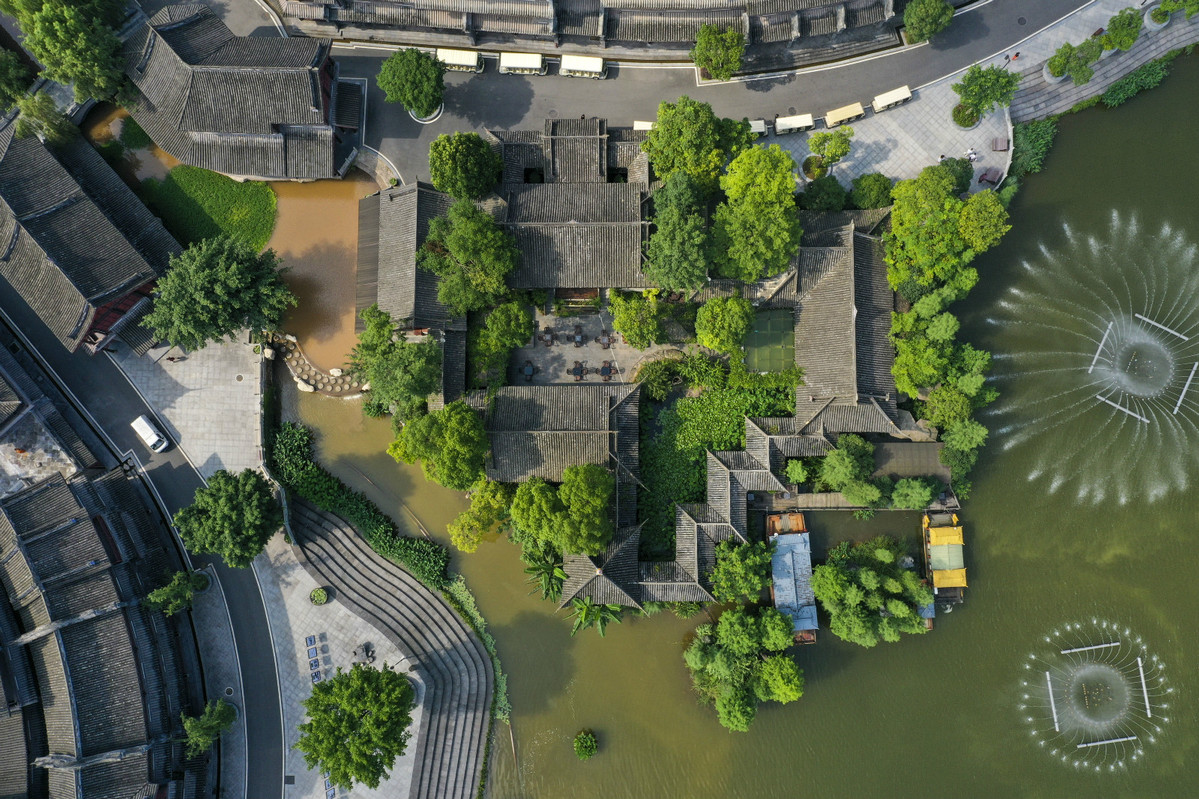'Sponge cities' absorb urban flooding woes






Chongqing develops
Meanwhile, the southwestern metropolis of Chongqing has witnessed rapid development in sponge city construction and is looking for ways to solve water problems in urban areas of West China.
By the end of last year, a sponge city covering just over 42 sq km had been built in the Liangjiang New Area, Wanzhou and Bishan districts and Xiushan county, according to the municipal Commission of Housing and Rural and Urban Construction.
In coming years, all construction in Chongqing's main urban areas must meet sponge city standards, according to the local authorities.
Jin Junwei, deputy head of the Chongqing Sponge Engineering and Technology Center, said that in recent years concerns have arisen in many Chinese cities over water pollution, water shortages and flooding.
"The concept of a sponge city is a Chinese adaptation of international water management techniques. The goal is to manage flood risks, treat the water and control the use of resources while creating a pleasant living environment," he said.
Chongqing has annual rainfall of more than 1 meter, the bulk of which falls in summer and autumn. Due to its complex landscape, the city faces challenging issues such as flood control and drainage.
The quality of water flowing through Chongqing, which is situated on the upper reaches of the Yangtze, is not only important to the city itself, but also to many other parts of the country.
The Yangtze, the world's third-longest river, flows 6,300 kilometers from the glaciers of the Qinghai-Tibet Plateau east through Chongqing, Wuhan, capital of Hubei province, and Nanjing, capital of Jiangsu, before reaching the East China Sea in Shanghai.
More than 400 million people get their drinking water from the river, and water security has become a major national development issue.
Situated in Chongqing Liangjiang New Area, Yuelai New City, which covers 18.67 sq km, was one of 16 sponge cities on a national pilot list of climate-resilient urban designs released in 2016.
The city has established a model sponge system in mountainous areas through a number of demonstration ventures. These include the Yuelai International Expo Center Sponge Reconstruction Project and the Yuelai Convention Center Park Reconstruction Project, which have significantly reduced the amount of pollutants discharged into the Yangtze.
Yang Ping, deputy general manager of Chongqing Yuelai Investment Group, said: "During heavy rainfall, the water is absorbed by porous bricks and by plants to prevent flooding. We collect and store most of it, then use the water for irrigation or cleaning.
"The roof of a huge exhibition hall features a special rainwater collection path. Before the water flows into a pipe, we use a special device to purify it for the first time before directly discharging it into wetland through the pipe," he added.
Surplus water is purified again and discharged into six reservoirs. Yang added that the company has been able to save 600,000 yuan ($89,105) in water charges every year.
Chongqing is also the first of China's 30 sponge cities to have a smart stormwater control system.
This digital urban drainage system has been developed by Suez, one of the world's leading water and waste management companies. It is used to monitor, analyze and predict the operating status of rainwater drainage, urban flooding risks, ecological effects and methods to reuse rainwater. The system also calculates and reports on how a sponge city performs against a set of key indicators.
According to Suez, by consolidating and analyzing this data, the software will protect against the risk of flooding and also limit pollution on the Yangtze.
In January 2018, the first phase of the Yuelai Sponge City Monitoring and Information Platform project was completed and started trials. It will be extended to other parts of the Liangjiang New Area.




















